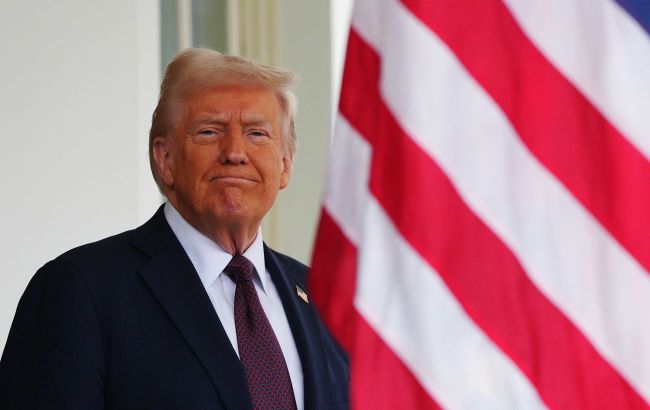Trump tariffs paralyze $80 billion industry – FT
 Photo: Trump's tariffs have brought the diamond industry to a standstill (Getty Images)
Photo: Trump's tariffs have brought the diamond industry to a standstill (Getty Images)
Diamond traders say the $82 billion industry has come to a standstill due to Donald Trump's tariffs and the global trade war. Deliveries through the gem trading center of Antwerp have dropped to about one-seventh of normal levels, the Financial Times reports.
Trump's sweeping tariffs include a 10% levy on diamond imports, as well as retaliatory tariffs by country of origin, although many other minerals such as gold and copper are excluded from the measures.
The United States is the world's largest consumer of diamonds, accounting for about half of global demand, but it has to import them all because it has no domestic diamond mines.
Although Donald Trump has suspended the so-called retaliatory tariffs for 90 days, the basic 10% tariff is already in place and remains in effect. The uncertain outlook has had a dampening effect on gemstone traders, as well as on India's huge polished diamond industry.
Sales have stalled
According to Karen Rentmeesters, CEO of the Antwerp Diamond Center, diamond shipments from Antwerp, one of the world's busiest gem trading centers alongside Dubai, have stalled since Trump announced new global tariffs this month.
She said it doesn't make sense to include diamonds in the US tariffs and compared the turmoil in the highly globalized industry to that caused by the coronavirus pandemic.
Rentmeisters estimated that daily shipments were only one-seventh of normal levels. She said this is devastating the industry, and added that everything has stopped.
The diamond industry has already experienced several difficult years, during which the pandemic and competition from lab-grown diamonds have reduced consumer demand.
The head of the Trustco Resources mining company said that diamond tariffs will not lead to an increase in production in the United States.
An ordinary diamond travels around the world many times before it ends up in the hands of a buyer, between producing countries such as Botswana, trading centers including Dubai, and cutting centers in India.
The only part of the supply chain that is located in the United States is the certification process. The world's largest certifying agency, the Gemological Institute of America, is located in California and employs 3,200 people.
The normal process of transporting diamonds to and from the US for certification is now under threat.
Threat to industry
According to analysts, the global trade war is likely to hit the overall demand for diamonds, which has barely begun to revive after several difficult years, and create major disruptions in the supply chain.
India, whose large polished diamond industry processes over 90% of the world's diamonds, could be particularly hard hit.
Since processed diamonds are considered to be originating from the country where they were cut, India's multi-billion-dollar diamond export industry will be affected by the 27% tariff proposed by the US on Indian goods, unless the two countries reach a tariff avoidance agreement.
For global diamond demand, uncertainty is the problem, said Paul Zimnisky, an independent diamond analyst, adding that when people are not sure, they hesitate to buy, they hesitate to invest. He thinks it will have some impact on consumer goods, such as luxury goods like diamonds.
Anglo American, the owner of De Beers, has reduced the value of the diamond giant by $4.5 billion over the past two years due to poor market conditions. Anglo is preparing to spin off De Beers in an initial public offering later this year.
New York-based Signet Jewelers, the world's largest diamond jewelry retailer, is also struggling with the tariffs. On April 4, the company informed its suppliers that it would not pay for any new tariffs on existing purchase orders at all, meaning it would require its overseas suppliers to pay the duties.
In the letter, seen by the FT, Signet also urged its suppliers to send existing orders to the US as soon as possible, focusing on April and May.
On April 2, Trump announced the introduction of a 10% tariff on all countries and increased tariffs for certain countries. On April 9, Trump announced a 90-day pause in tariffs for the largest trading partners.

